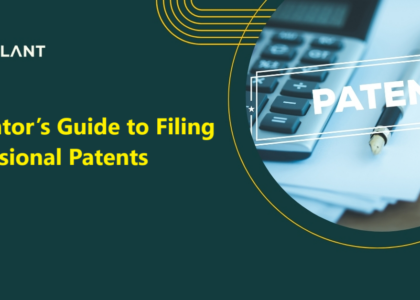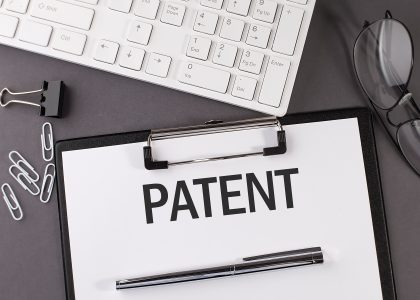

How Long Does A Provisional Patent Application Last?
Provisional patent applications provide just one year of protection from the date of filing. This is known as a “pendency stage.” The patent procedure is currently pending and cannot be prolonged under any circumstances. If you fail to submit the entire non-provisional application by the deadline, you risk losing the rights to your own innovation.
A provisional patent does not exist, despite the fact that it is utilized by inventors and some patent agencies. The phrase refers to a provisional patent application (PPA), which is not even a patent.
A provisional patent application is frequently the first stage in the patent application process. Unlike a non-provisional patent application, which is filed later, the provisional application is not required and will not grant your innovation patent protection. It will mark your creation as “patent pending” and safeguard your concept for a year. To patent your invention, you must first complete and file a non-provisional patent application.
A PPA consists of:
- Several pages of text are referred to as the “specification,” which describes how to make and use the invention.
- d drawings that enhance the above information.
- A cover sheet with your contact and payment information.
You may simply construct your own PPA and submit it through the USPTO’s website, but make sure you complete the necessary research to ensure that you include all of the relevant information.
What is the significance of a Provisional Patent Application?
A provisional patent application grants you interim legal protection. These are the most cost-effective patent applications. They’re a terrific method for innovators to gain the necessary protection without having to spend the money to properly patent an idea. A temporary application serves as a holding pattern while you figure out funds. During this phase, you will develop an overall patent strategy before the end of the year. A PPA can be filed by anybody who has ownership rights to an invention.
Even if you developed the thing you are attempting to patent, your ownership rights may be called into doubt if:
- Your employer has a “shop right” implied license.
- You were hired specifically to create the invention.
- You signed a statement giving your ownership rights to someone else.
- You signed an employment agreement that made you give up your rights.
If the inventor’s employer files an invention, an Assignment can be filed with the USPTO to shift ownership of the invention. This might be done at the time of the patent application or later on.
When you submit a provisional application, you will be assigned a priority date. This is the deadline for submitting the entire non-provisional patent application. The patent period will not begin until either the regular application or the provisional patent application is converted. The normal patent period is 20 years.
Reasons to Consider and How Long a Provisional Patent Will Last?
Because the US Patent and Trademark Office (USPTO) allows you a full year to convert a provisional patent application to a formal patent application, you must carefully organize your application procedure. Submitting a provisional patent application too soon may result in insufficient time to acquire the cash required to file for the complete patent within one year.
Sometimes you are not prepared to file the non-provisional patent application before the end of the year. In this scenario, you can submit a new provisional patent application with additional information regarding your innovation. The disadvantage is that you can only claim protection from a provisional patent application that has not expired.
If you’re not sure whether filing a provisional patent application is suitable for you, presume it is if any of the following conditions apply:
- You think your invention has a chance for commercial success.
- Your original patent search didn’t find any similar inventions, or “prior art,” that could prevent you from getting a patent.
Pros and Cons of Filing a Provisional Patent Application
There are various advantages of filing your provisional patent application:
- To prevent others from stealing your innovation, utilize the “Patent Pending” notification.
- You can take a whole year to evaluate the commercial prospects of your idea before committing to the greater fees of filing a full, normal patent.
- Before ever testing or creating the innovation, you may be deemed the “first to create.”
- Your application is kept private.
- You schedule a formal filing date with the Patent Office.
- You get an extra year of patent rights even before you file the whole patent application.
As for drawbacks:
- Any modifications to the provisional patent application will need the filing of a new application. This involves adding, altering, or removing elements, changing the structure of the invention, or revising its operation. These extra treatments might quickly pile up.
- Incorrect PPA information might jeopardize your protection rights. Leaving out an element of the invention, utilizing inaccurate data or drawings, or neglecting to clarify key parts of the innovation can all result in a patent being denied.
Deadlines for Filing a Provisional Patent Application
It is not even necessary to file a provisional patent application to patent an innovation with a non-provisional patent application. As a result, there is no set deadline for submitting one. If, on the other hand, you have been selling your innovation or have given out any of its information, you should register a PPA as soon as feasible.
In some situations, you may want to hire a legal agency or a patent lawyer to handle the filing for you. Then deadlines may apply.
However, keep in mind that you do not need a lawyer to file a PPA on your behalf. Hiring a patent attorney is an excellent option if you want to file a non-provisional patent application. However, professional legal counsel is not required at this early stage. You can conduct your study and fill out the application. Keep in mind that having a patent lawyer on your side might be beneficial.
What Can Happen If You Take the Provisional Option?
Although it is not required, filing a provisional patent application is a frequent technique for innovators pursuing patents. The provisional application procedure is a two-step process that begins with the initial provisional application. Within one year, the second step is to file a non-provisional patent application. Even though the Patent Office will never see the PPA, this technique can provide you with an extra year of patent protection before you even patent the innovation.
If you choose the provisional option, you must do a patentability search. This may be accomplished by searching for terms relating to your patent on the Patent Office’s website or Google Patents. This might take several weeks, especially if done in your spare time.
The PPA drafting comes after the research. You will meticulously record your innovation and its applications using a PPA template. Because drawings are essential, you should think about employing a patent illustrator. If that isn’t possible, don’t be scared to do it yourself. Make sure the illustrations are equally detailed.After submitting the PPA to the Patent Office, you will be assigned a confirmation number and a priority date. Keep an eye on the priority date, since this is when your PPA protection will expire. To get your idea formally patented, you must first file a non-provisional patent application.








